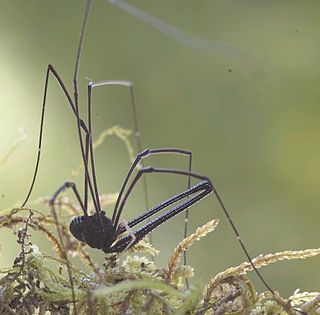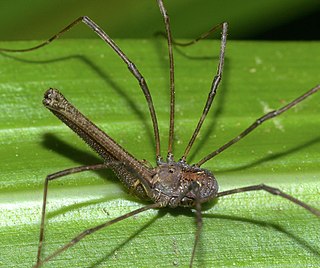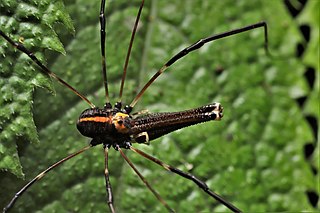
Desidae is a family of spiders, some of which are known as intertidal spiders. The family is named for the genus Desis, members of which live in a very unusual location — between the tides. The family has been reevaluated in recent years and now includes inland genera and species as well, such as Badumna and Phryganoporus. In 2017, the family Amphinectidae was merged into Desidae. The family Toxopidae has been separated off. Those intertidal spiders that are truly marine commonly live in barnacle shells, which they seal up with silk; this allows them to maintain an air bubble during high tide. They emerge at night to feed on various small arthropods that live in the intertidal zone.

Ground spiders comprise Gnaphosidae, the seventh largest spider family with over 2,000 described species in over 100 genera distributed worldwide. There are 105 species known to central Europe, and common genera include Gnaphosa, Drassodes, Micaria, Cesonia, Zelotes and many others. They are closely related to Clubionidae. At present, no ground spiders are known to be seriously venomous to humans.

The Eupnoi are a suborder of harvestmen, with more than 200 genera, and about 1,700 described species.

The Triaenonychidae are a family of harvestmen with about 120 genera and more than 440 described species.

The Neopilionidae are a family of harvestmen.

The Monoscutidae are a family of harvestmen with 32 known species that all occur in or near Australia and New Zealand.

The Pettalidae are a family of harvestmen with 75 described species in 10 genera. Several undescribed species are known or assumed in some genera.
The Synthetonychiidae are a small family of harvestman with a handful of species in a single genus. They are endemic to New Zealand.
Cantuaria is a genus of South Pacific armored trapdoor spiders that was first described by Henry Roughton Hogg in 1902. From 1985 to 2006 it was merged with former genus Misgolas, now Arbanitis.
Huara is a genus of South Pacific intertidal spiders first described by Raymond Robert Forster in 1964.
Neoramia is a genus of South Pacific sheetweb spiders first described by Raymond Robert Forster & C. L. Wilton in 1973.
Oramia is a genus of South Pacific funnel weavers first described by Raymond Robert Forster in 1964.

Forsteropsalis is a genus of harvestmen (Opiliones) endemic to New Zealand. Males of this genus have exaggerated chelicerae weapons used in male-male competition. Forsteropsalis are opportunistic omnivores that both capture live prey and scavenge dead animal matter. The diet includes various insects, arachnids, spiders, millipedes, amphipods, and annelid worms.

Pantopsalis cheliferoides is a species of Neopilionid harvestmen. This species was originally described by William Colenso and is endemic to New Zealand.

Pantopsalis albipalpis is a species of harvestman in the genus Pantopsalis. It was first described by Reginald Innes Pocock in a paper published in 1902. P. albipalpis cannot be distinguished from P. johnsi but P. johnsi has not been synonymised as these species each have a distinct distribution.

Pantopsalis listeri is a species of harvestman in the family Neopilionidae.

Forsteropsalis pureora is a species of long-legged harvestman in the family Neopilionidae. This species is endemic to New Zealand, found in the North Island. They are found in native forest, often resting on vegetation or stream banks.











